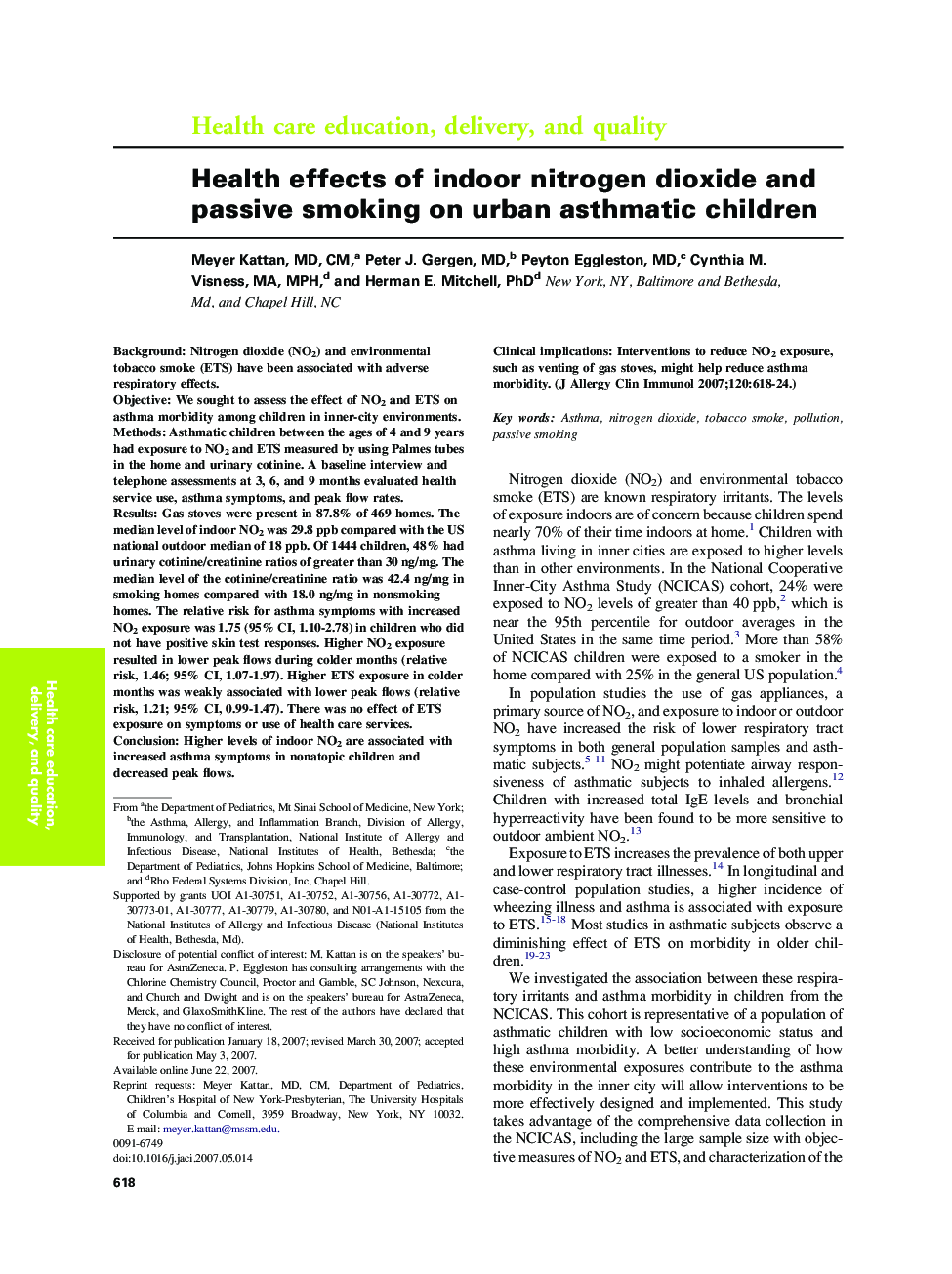| Article ID | Journal | Published Year | Pages | File Type |
|---|---|---|---|---|
| 3201965 | Journal of Allergy and Clinical Immunology | 2007 | 7 Pages |
BackgroundNitrogen dioxide (NO2) and environmental tobacco smoke (ETS) have been associated with adverse respiratory effects.ObjectiveWe sought to assess the effect of NO2 and ETS on asthma morbidity among children in inner-city environments.MethodsAsthmatic children between the ages of 4 and 9 years had exposure to NO2 and ETS measured by using Palmes tubes in the home and urinary cotinine. A baseline interview and telephone assessments at 3, 6, and 9 months evaluated health service use, asthma symptoms, and peak flow rates.ResultsGas stoves were present in 87.8% of 469 homes. The median level of indoor NO2 was 29.8 ppb compared with the US national outdoor median of 18 ppb. Of 1444 children, 48% had urinary cotinine/creatinine ratios of greater than 30 ng/mg. The median level of the cotinine/creatinine ratio was 42.4 ng/mg in smoking homes compared with 18.0 ng/mg in nonsmoking homes. The relative risk for asthma symptoms with increased NO2 exposure was 1.75 (95% CI, 1.10-2.78) in children who did not have positive skin test responses. Higher NO2 exposure resulted in lower peak flows during colder months (relative risk, 1.46; 95% CI, 1.07-1.97). Higher ETS exposure in colder months was weakly associated with lower peak flows (relative risk, 1.21; 95% CI, 0.99-1.47). There was no effect of ETS exposure on symptoms or use of health care services.ConclusionHigher levels of indoor NO2 are associated with increased asthma symptoms in nonatopic children and decreased peak flows.Clinical implicationsInterventions to reduce NO2 exposure, such as venting of gas stoves, might help reduce asthma morbidity.
